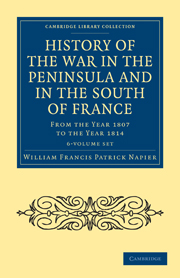 As Amelia Edwards disarmingly remarks in the preface to A Thousand Miles up the Nile, ‘it may be objected that the distance from the port of Alexandria to the Second Cataract falls short of a thousand miles. But from the Rock of Abooseer, . . . the traveller looks over an extent of country far exceeding the thirty or thirty-five miles necessary to make up the full tale of a thousand.’ So that’s all right.Miss Edwards’ book is one of several we have reissued about Egypt and Egyptology, and we would love to do more, but there are inherent difficulties: many – especially early excavation reports – are too big to fit our scanning machines; many have exquisite colour illustrations which cost more to print that we can currently make economic sense of; and many authors of the heroic early years of scientific Egyptology are still in copyright: Sir Flinders Petrie himself, the ‘father’ of the discipline, who as a young man was sponsored by Miss Edwards, died at the age of 89 in 1942.*
As Amelia Edwards disarmingly remarks in the preface to A Thousand Miles up the Nile, ‘it may be objected that the distance from the port of Alexandria to the Second Cataract falls short of a thousand miles. But from the Rock of Abooseer, . . . the traveller looks over an extent of country far exceeding the thirty or thirty-five miles necessary to make up the full tale of a thousand.’ So that’s all right.Miss Edwards’ book is one of several we have reissued about Egypt and Egyptology, and we would love to do more, but there are inherent difficulties: many – especially early excavation reports – are too big to fit our scanning machines; many have exquisite colour illustrations which cost more to print that we can currently make economic sense of; and many authors of the heroic early years of scientific Egyptology are still in copyright: Sir Flinders Petrie himself, the ‘father’ of the discipline, who as a young man was sponsored by Miss Edwards, died at the age of 89 in 1942.*
Some of the Hakluyt Society volumes cover travels in Egypt: Varthema and Leo Africanus, for example. Burckhardt’s Travels in Nubia includes Upper Egypt and the Sudan. But these are books of exploration: Egypt and its marvels were opened up to British travellers of leisure and for pleasure only after the Napoleonic Wars, when the Mediterranean was safe for British ships and the consequences of the Battle of the Nile had poured previously French-held Egyptian antiquities – including the Rosetta Stone – into the British Museum and private collections. Hence (inter alia) Shelley’s ‘Ozymandias’, the Regency passion for Egyptian motifs in architecture and furniture, and the work of Thomas Young, ‘the last man who knew everything’, on the decipherment of hieroglyphs.
And hence especially the exotic figure of Giovanni Battista Belzoni, ex-novice monk, ex-student of hydraulics (allegedly), ex-circus strongman, ‘a magnificent 6 feet 6 inches tall, and of great strength, a handsome man with blue eyes, dark hair, and a fresh complexion’ (that’s the ODNB, not me!). Fetching up in Egypt in order to build a more efficient water-wheel for the government, he found himself almost destitute, but used his engineering skills to help move the ‘Colossus of Memnon’, a giant statue of the Pharaoh Ramesses II, from its site at Luxor to the River Nile, thence to a British ship and thence to the British Museum (its arrival may have been the inspiration for Shelley’s poem). This led to other commissions from dilettanti who lacked the muscle themselves to get into blocked or buried tombs, and launched Belzoni’s latest career, as an archaeologist – or as a treasure-hunter who used gunpowder to blast his was into tombs when his engineering skills failed, depending on your point of view. His book, and his display, in the ‘Egyptian Hall’ at Piccadilly, of a mock-up of the tomb of Seti I, which he had discovered, made him famous, but he apparently wanted more: he set off to discover the source of the Niger, and like many before and after him, died in the process, in Benin in December 1823.
The great German Egyptologist Karl Richard Lepsius was sent in 1842 by King Friedrich Wilhelm IV of Prussia with the generic brief to explore and record ancient Egyptian remains. His approach was considerably less intrusive than that of Belzoni; his account of the expedition, in the form of letters to the King and other ‘high patrons and honoured men’, including Alexander von Humboldt and Bunsen, was translated into English in 1852. His masterwork, Denkmäler aus Ägypten und Äthiopien, published in 12 volumes between 1846 and 1856, is one of the ones we’d love to do but can’t: 790 x 680 mm, and filled with glorious colour engravings . . .
Tourists, rather than travellers, now began to visit Egypt in greater numbers: Murray’s first Handbook for Travellers in Egypt was published in 1847. Mrs Elwood passed through Egypt on her way to India with her soldier husband and published her account in 1830; Lucie Duff Gordon published Letters from Egypt in 1865. And in 1873, Amelia Edwards (1831–92), successful novelist and journalist (one of her works was compared favourably with Jane Eyre, as not exhibiting the ‘coarseness’ which marred the latter), set off on a warm-weather holiday which changed the course of her life.
The resulting (enormously popular) book of over 700 pages (and its sequel, Pharaohs, Fellahs and Explorers (1892) was only a part of it. She began to study Egyptian language and archaeology seriously (at a time, she reminds us, when some savants had not yet accepted Champollion’s decipherment); she put money and energy into the founding of the Egypt Exploration Fund (today the Egypt Exploration Society) in 1882; she formed an alliance with Gaston Maspero, the government director of excavation, as a result of which Flinders Petrie was sent by the Fund on his first Egyptian excavation in 1884. She established the Edwards Professorship of Egyptology (the first such chair in the world) at University College London, to which she bequeathed her own library and collection of antiquities on her death in 1892, of an illness contracted when supervising the unloading of antiquities at London docks. If Petrie was the father of Egyptology in England, Edwards was the mother, midwife, secretary, housekeeper and maid-of-all-work.
Of the same generation as Maspero and Petrie was Sir Wallis Budge, a Cornish boy of unknown father, whose natural gifts were so apparent that W.E. Gladstone, among others, sponsored his undergraduate career at Cambridge, where he studied Semitic languages. Budge’s working life was spent in the British Museum, whose collections he enhanced by purchasing trips to Egypt and the Near East; he was not a great excavator but a distinguished interpreter and populariser, sufficiently well known that he has a walk-on part in Edith Nesbit’s children’s book, The Story of the Amulet (1906), which is dedicated to him.
And of course in 1922 the tomb of the boy king Tutankhamun was discovered – the first spectacular find of the era of mass communication. Howard Carter’s ‘day of days, the most wonderful that I have ever lived through, and certainly one whose like I can never hope to see again’ fired the public imagination worldwide, and Egyptology continues to have this effect – it is the bread and butter of the Discovery and National Geographic channels, and archaeological tourism is an important element of the Egyptian economy. And none of this might have happened – or certainly not in the same way – if Amelia Edwards hadn’t decided in 1873 to cut her losses on a cold and wet holiday in central France and head south.
Caroline
PS: Flinders Petrie has now (2013) come out of copyright, and we have now reissued a number of his works – both the detailed site reports for use by specialists and his more general books on the archaeology, history and culture of ancient Egypt. See the list here!



Pingback: Coptic – Living or Dead? | Cambridge Library Collection Blog
Pingback: The Wandering Scholar | Cambridge Library Collection Blog
Pingback: Cambridge Library Collection Blog
Pingback: Don’t Try This At Home | Cambridge Library Collection Blog
Pingback: Inspiring Women | Cambridge Library Collection Blog
Pingback: More Than One Genius In The Family | Cambridge Library Collection Blog
Pingback: The Father Of Egyptology | Cambridge Library Collection Blog
Pingback: Sir Aurel Stein | Cambridge Library Collection Blog
Pingback: More Travellers to the Nile | Cambridge Library Collection Blog